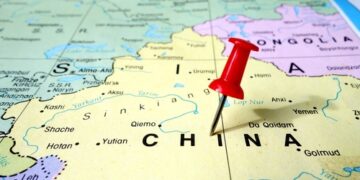The loading of oil on board vessels, is a critical operation. Due care must be taken to mitigate against the risk of pollution.
The following recommendations should be taken into consideration prior the commencement of cargo operations:
- Pre-arrival checks must be carried out before reaching the loading port on the cargo/bunkering systems and equipment. This must include, but is not limited to, testing high level alarm systems.
- A ship-shore safety checklist must be agreed with the terminal and understood by all personnel involved in the cargo operations. This must also be signed by a ship and a terminal representative. This checklist should include the emergency stop signal for cargo operations and the contingency actions to be undertaken by the ship and the terminal in case of emergencies.
- A cargo loading plan must be developed and include details of;
- the sequence of different cargo grades to be loaded (if more than one grade),
- manifolds to be used,
- ship nominated tanks,
- maximum loading rates including reduced rates for initial loading and topping off tanks,
- sequence of tanks loaded,
- intermediate sampling requirements, if any,
- and notices for reduction/stoppage of loading as required by the terminal. This must be agreed and documented.
- All scuppers and drain holes such as those in manifold drip trays must be plugged. This is crucial to containing oil on deck in the event of an overflow. In case of rain water accumulating around the scuppers, it is important that a deck watch keeper monitors this accumulation and periodically opens the scupper, drains out the rain water and plugs the scupper back again. The scupper cannot be left unattended whilst unplugged. The water accumulation must be maintained at a minimum. If not, in case of an oil spill, the oil would simply float on top of the accumulated water and possibly spill over the deck edge coaming, thereby defeating the containment measure in place.
- All unnecessary cargo and ballast tank openings such as tank hatch lids, sighting/ullage ports, tank cleaning hatches, manholes and sampling ports must be battened down and shut using all available fixings.
- All oil spill cleanup equipment, as per the Shipboard Oil Pollution Emergency Plan (SOPEP), needs to be kept ready for immediate use at the manifold areas and at the aftermost part of the cargo deck. Air driven portable pumps should be kept rigged at the aft part of the cargo deck with the discharge hose connected to the dump point of the slop tank.
- All required firefighting gear needs to be maintained so that it is ready for swift operation at the cargo deck. This also includes the availability of portable foam type fire extinguishers at the manifold, fire hoses with jet-spray type nozzles readily rigged on the fore and aft end of the manifolds and fixed fire/foam monitors on the main deck to be kept pointing towards the manifold area. The fire control plan and the International Shore Connection (ISC) must be placed close to the gangway for external fire fighters if the need arises.
- The setting of the cargo lines and valves as per the cargo plan, including the tank venting system, must be carried out by a responsible person and independently verified by the cargo officer. This process is to ensure that all valves not being used are firmly shut and only tanks nominated to receive cargo are lined up. This includes the sealing of the cargo sea-chest valves and also confirmation that the spool piece in the pump room between the cargo and ballast pipeline system is removed.
- There must be adequate manpower to form the deck watch. This should be documented in the form of a cargo watch keeping roster. The deck watch should ideally comprise of a person standing by at the manifold at all times. Another watch keeper must always be present in the vicinity of the tanks being loaded and a third watch keeper must take scheduled safety and security rounds on deck and the pump room as agreed in the ship to shore safety checklist. The Cargo Control Room should be manned by the cargo officer at all times to control the cargo loading operation and also handle communications with the terminal.
- Loading must commence at an initial slow loading rate. It is very important that the non-nominated cargo tanks along with the nominated tanks are checked to confirm that only the dedicated tanks are receiving cargo. Similarly ballast and void spaces adjacent to the cargo spaces must be verified to ensure there is no accidental migration of cargo into these spaces. This monitoring must be undertaken at regular intervals until the completion of loading.
- Cargo sampling should be undertaken.
- During the course of loading, it is important that the watch keeper positioned at the manifold ensures that the pressure gauge shows zero back pressure at all times. In case of a build-up of pressure, it either indicates that the loading rate is too high for the number of tanks being loaded or if topping off tanks, the valve of the tank completing its load is closed sooner than the next nominated tank’s valve is opened. These surges of back pressure are not good for the ship’s valves and pipelines or the shore’s pipelines and cargo pumps and therefore must be avoided at all times.
- In case of an oil spill during loading, apart from commencement of containment and mitigation procedures, it is imperative that the terminal is informed immediately and all loading operations are suspended. Investigations into cause can be carried out after the loading has ceased and the situation is contained.


































































The Cargo Control Room should be manned by the cargo officer at all times to control the cargo loading operation and also handle communications with the terminal.